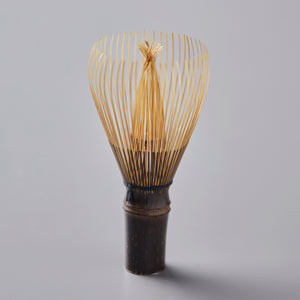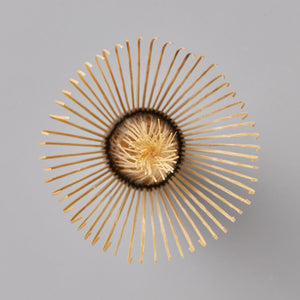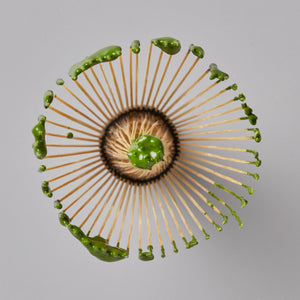Your Cart is Empty



Sold out
CHASEN TANIMURA
$48.00
Chasen TANIMURA is a handmade chasen ("matcha whisk") from Tango Tanimura ( 谷村丹後), a 20th (yes, 20th!) generation producer of matcha whisks from Takayama-chō just outside Ikoma city in Nara prefecture, Japan. Originally a salaryman, Tango returned to his family's long history of matcha tool making at age 29, and has kept alive the original production techniques first developed during the Tokugawa shogunate (Edo period; 1603). The Tanimuras are among the remaining 3 of 13 whisk-making families given their surnames centuries ago. This whisk is identical to those used then.
Tango's process is no secret, but nearly impossible to replicate. Carved from a single rod of black hachiku bamboo, Tanimura whisks are several years in the making. The bamboo must first be hand-harvested, simmered to clean and polish, dried for a month in harsh midwinter winds under full sunlight, aged for 3 years, cut, and then aged for another 1-2 years. Prepared bamboo is then shaved, split into 16 sections, with each of those split into another 10 slivers. 80 of these become the outer tines, and the other 80 become the inner. Then the whisk is softened in hot water, and each tine shaved by hand to ideal thinness and pliability in a phase called "aji-kezuri". Finally, the tines are softened once more, the inner ends twisted together and the outer ends rounded inward. Each whisk takes about a day to complete.
While deeply beautiful, this chasen prioritizes function over form. When we first met with Tango to discuss his process, he explained that in chanoyu ("tea ceremony" | 茶の湯), nothing should distract from the moment. Aesthetics are the last thing on his mind when producing whisks; his chasen's ability to produce silky microfoam with minimal effort speaks to this. Relative to matcha whisked with a standard whisk, Chasen TANIMURA produces superior matcha without exception. This whisk is the genuine article; use for truly good matcha.



